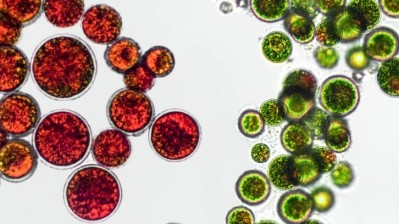NOW finds inaccurate, misleading labeling among magnesium supplements sold on Amazon

The latest test results were released this week. NOW, which is based in Bloomingdale, IL, tested 14 products sold by lesser known brands. The results of the tests were matched against results of tests on two of NOW’s own SKUs. The tests were conducted both in house in NOW’s state-of-the-art lab as well as by Eurofins.
As with the other testing NOW has done, the results revealed misleading and inaccurate labeling. Also, many of the products did not contain the claimed material, material form, or amounts.
Cheaper, less absorbable forms of magnesium proliferate in market
Adulteration in the form seen in botanical ingredients is not an issue for mineral supplements. It’s impossible to fake whether the element magnesium is present or not. But what can occur is the substitution of a cheaper, less absorbable or bioavailable form of a mineral, while still claiming superior performance on the label. To no one’s surprise, NOW’s tests showed that many of the lesser known brands are engaging in this practice.
Chelated minerals are generally regarded as the superior form of mineral ingredients for supplements. In this form, the element, magnesium in this case, is bound with a ‘ligand,’ which can be an amino acid, a protein or other material. This transforms the inorganic metallic element into a biological form for better absorption.
In the case of magnesium, the amino acid glycine is used, to create a form called magnesium glycinate. Albion Minerals, now part of Balchem, is the supplier of this ingredient in several forms. It’s more expensive than competing forms of the mineral, but has a proven absorption track record.
Total magnesium content not the whole issue
Out of 16 tested products, 12 (including the two NOW SKUs) met the label claim when tested for total magnesium content. However, only the NOW products met the label claim when looking at the soluble (chelated) form of magnesium, suggesting that other brands use non-soluble forms of magnesium in place of the more expensive chelated form. Glycine was also detected in all samples, although the soluble magnesium results clearly suggest that glycine was not (or not entirely) bound with magnesium.
Dan Richard, vice president of global sales and marketing at NOW and the person in charge of the testing program, said the various forms of minerals used in supplements can be confusing for consumers. And some brands, he said, appear to take advantage of that complexity to obfuscate what they are doing in their formulations so as to induce consumers to pay for more than what they’re getting.
“I know minerals are hard to understand. You’d think a 20% magnesium glycinate is better than a 10%, but it’s actually the reverse. Even though 20% material is higher potency, the absorption/activity is up to 1/3 less,” Richard told NutraIngredients-USA.
“Chelates are very confusing, and labeling accurately and honestly is not universal. Most brands are not buying from Albion like NOW does, and are getting Magnesium Oxide or Carbonate is just blended with glycine and not reacted. The difference is absorption. People buy glycinate forms of minerals because the absorption is supposed to be at least three times better than oxide or carbonate forms,” he said.
Confusing labels mask poor performance
This kind of obfuscation can extend to claiming a huge dose of aa magnesium ingredient on the front label, while only revealing elsewhere that much less of the element is actually present. And the situation looks worse when testing for the soluble amount of the mineral. Most of the brands tested had 50% or less of the stated amount of magnesium when looking just at how much of it was soluble. The body is capable of chelating inorganic minerals in the gut, but the process is very inefficient, so the assumption is that most of that insoluble magnesium is wasted.
“I don’t think consumers understand the complexity of chelated minerals. But if someone buys a Calcium Citrate, for instance, and all they get is Calcium Carbonate plus some Citric Acid blended in, then they are not getting what they want. The substandard quality is hard to determine since most lab tests will just be for potency, and not for chelation or absorption. NOW picked this difficult item to test because magnesium glycinate is very popular, it’s expensive, and many brands are not labeling honestly or accurately,” Richard said.









